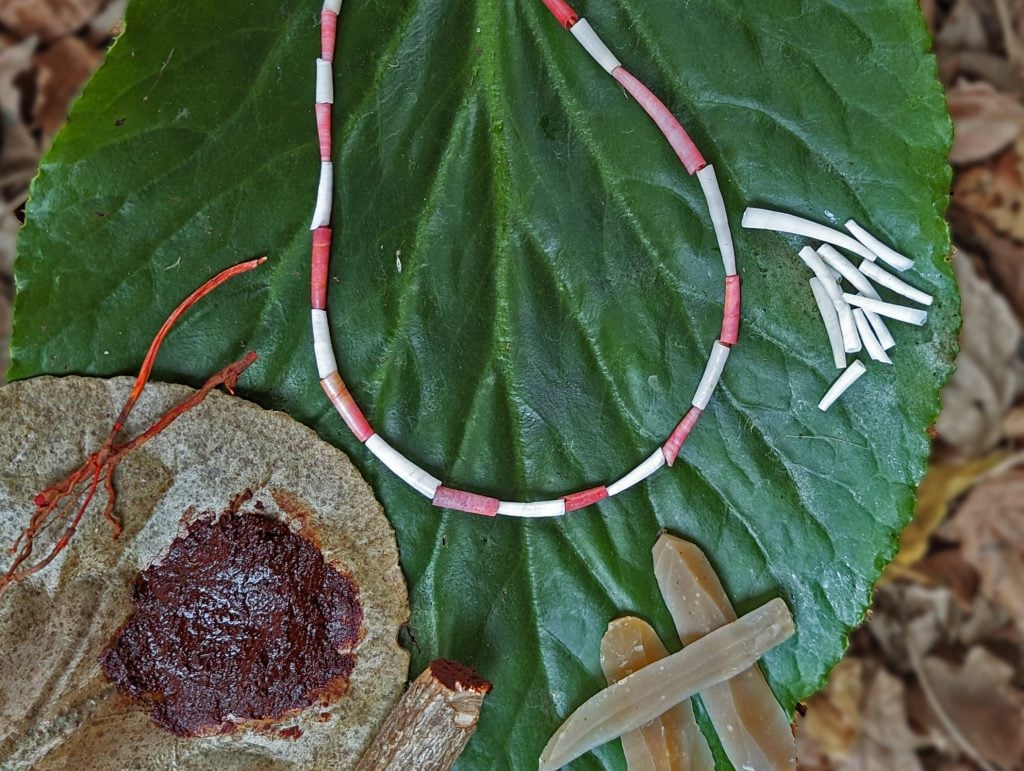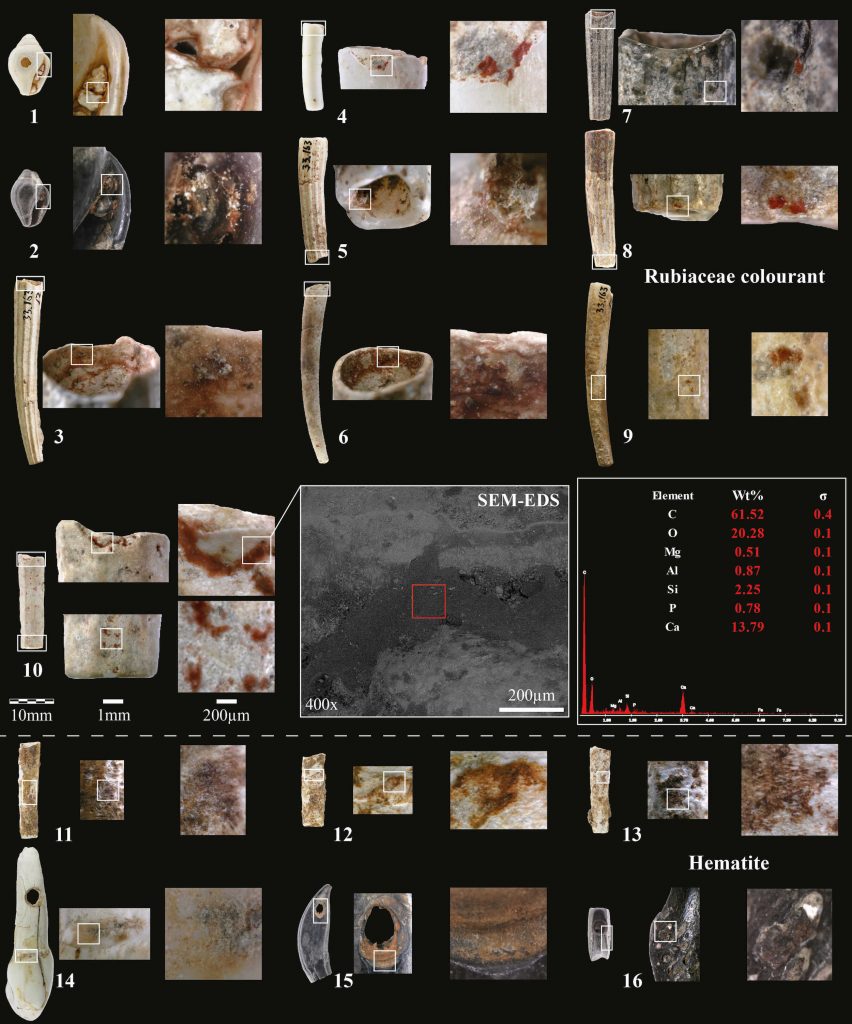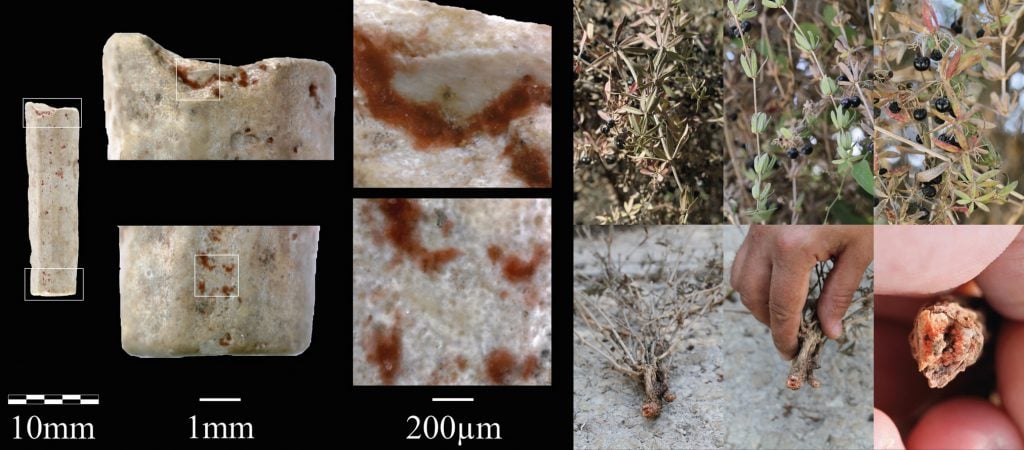Archaeology & History
New Research Reveals the Earliest-Known Organic Red Dye Dating Back 15,000 Years
A study of 10 beads from a Levant cave shows the earliest use of dye from the rubiaceae plant.

A study of 10 beads from a Levant cave shows the earliest use of dye from the rubiaceae plant.

Richard Whiddington

Tutankhamun’s sarcophagus, Van Gogh’s poppies, and Britain’s red coat uniforms share something: they all derived their red color from the roots of the rubiaceae plant.
A new addition to that list are the shell beads of early Natufian societies that lived in the Levant 15,000 years ago. This is the conclusion of researchers from Hebrew University of Jerusalem and Sorbonne University who used two types of spectroscopy to examine 16 beads found in Kebara Cave on Mount Carmel, Israel.
Ten of the beads show the cave-dwellers gathered and processed rubiaceae to embellish the appearance of their ornaments at a time before plant domestication. While the exact process remains unclear, making a dye from the root, also known as wild madder, involves cleaning, drying, and crushing the root before boiling it in water, a practice that continues to this day.

The 16 shell, tooth and bone beads from Kebara Cave analyzed. 1-10 are all shell beads colored with the Rubiaceae colorant. 11-16 are shell, tooth and bone beads colored with red mineral pigment. Image: Laurent Davin.
The colors black and red were fundamentally attractive to our ancestors and were used to decorate bodies, ornaments, cave walls, and burial cloths. Although humans are known to have used mineral pigments, such as iron oxide, as far back as 140,000 years ago, this is the earliest documentation of humans using plant-based colorants. It pushes back the archaeological timeline by 9,000 years.
Natufian societies were the first hunter-gatherers to adopt a sedentary lifestyle, a change leading to increased economic and social complexity. Aside from reflecting technical know-how and botanical knowledge, researchers believe the behavior suggests the importance of expressing individual and group identity of those living in Kebara Cave. It may also reflect a sense of competition with other Natufian societies.

15,000-year-old shell bead from Kebara Cave with residues of organic red colorant made of roots of Rubiaceae plant. Image: courtesy Laurent Davin.
“The invention of an organic red dye demonstrates the fundamental importance of this color,” lead author Laurent Davin told Artnet News via email. “It’s brighter, ‘purer,’ and stronger in tinting power than ochre, therefore more attractive to human eyes. The color red is one of the many tools used to create, express, maintain and transform their individual and collective identities over time and space.”
Archaeologists have yet to find any comparable colorant across thousands of bone, tooth, and shell beads discovered at other sites that span the 3,000 years of Natufian culture. Further research may investigate Natufian Rubiaceae’s domestication and explore how other parts of the plant were used.
Kebara Cave was first excavated in the early 1930s and has been a rich and vital archeological site ever since. It is believed to have been inhabited more than 60,000 years ago and in 1982 the most complete Neanderthal skeleton, nicknamed Moshe, was found.
More Trending Stories:
Revealed: The Major Mystery Consignors of New York’s Multi-Billion-Dollar Fall Auction Season
Christie’s Pulled Two Works by a Prominent Middle Eastern Artist From Sale After a Complaint